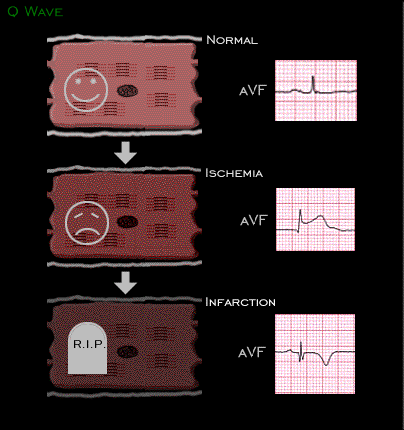
The ST segment changes of acute transmural and non-transmural ischemia are transient. They are reversed by relief of the ischemia or by its progression to a myocardial infarction. When this occurs, the cells within the center of the infracted region die, and can no longer be depolarized. This causes an abnormality in the sequence of depolarization. If the area of infarction is large enough, this abnormality in the sequence of depolarization leads to abnormalities in the QRS complex of the body surface electrocardiogram. The development of abnormal Q waves is a manifestation of this depolarization abnormality and indicates that the spread of excitation during the early portion of the QRS complex is directed away from the lead or leads recording the Q wave.
